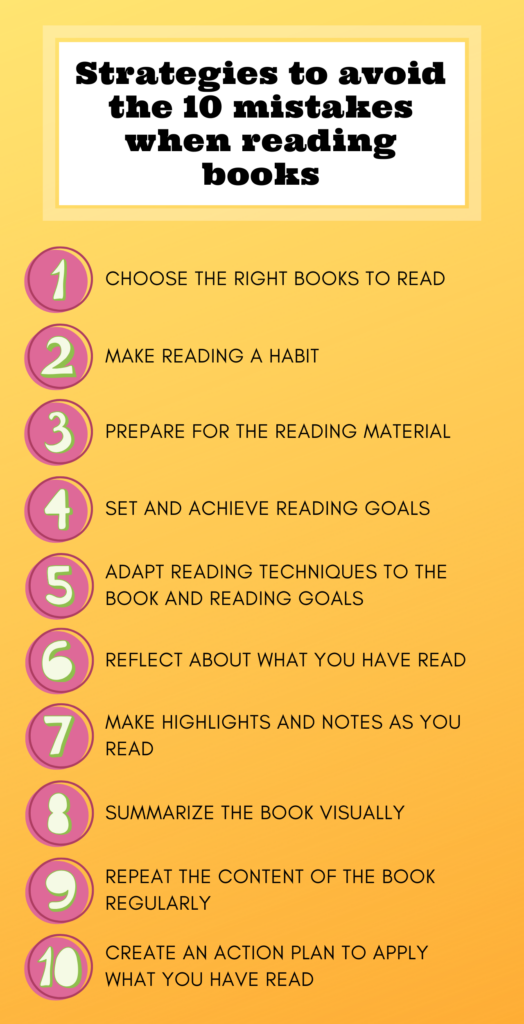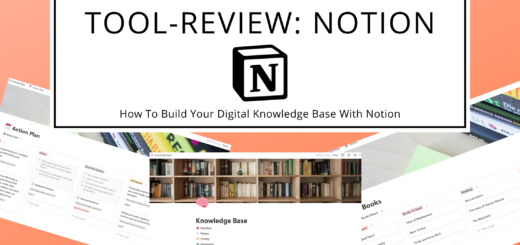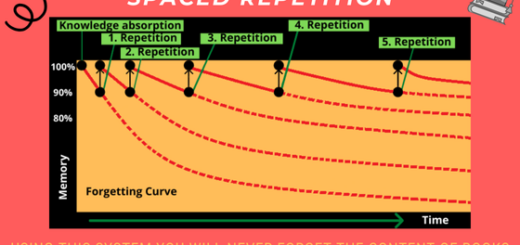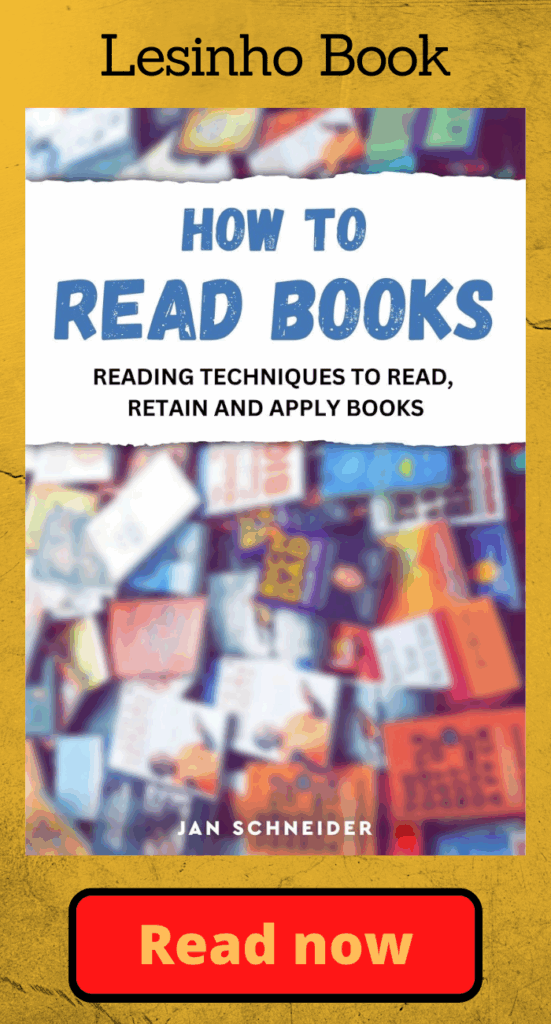Avoid These 10 Mistakes When Reading Books
People often make the following ten mistakes when reading books, which significantly reduce the effectiveness and efficiency of reading. Here, you will learn how to avoid these ten errors and thereby maximize the benefits of reading books. The description of these ten mistakes can also serve as a summary of the reading methods previously introduced that can help you rectify these errors.
1. Mistake: Choosing the Wrong Books
The first mistake is selecting the wrong books to read. Choosing the right books is crucial because good books can improve your life, while bad books do not help you and thus represent a waste of time. Therefore, you should only read books that will provide immediate assistance or be significant in the near future. It is advisable to spend half of your reading time on books that solve a current problem or help you achieve an immediate goal. The other half can be devoted to books that offer new perspectives or reveal new ideas and possibilities. For more book selection tips, check out the article on how to choose the right books to read.

2. Mistake: Not Practicing Reading as a Habit
The next mistake lies in reading books irregularly. This leads to a long time spent reading a book and makes it difficult to enter a reading flow, where you can fully immerse yourself in the book. You can solve this problem by building and maintaining a reading habit. Aim to read every day at a set time. This is the best method for reading many books and benefiting from them. To make building a reading habit easier, the following article will give you 7 tips to make reading a habit.
3. Mistake: Reading a Book Without Getting an Overview
Without an overview, it becomes significantly harder to read and process a book efficiently. Therefore, the first step of the PQ5R method is to get an overview of the reading material. This allows you to recognize the structure, layout, and content of the book. Consequently, it becomes easier to find the relevant text passages and place what you read into context. Thus, before reading, you should examine the front and back covers of the book to determine the topic and objectives. Next, briefly skim through the book to identify its basic structure and the use of images and graphics. Then, review the table of contents and read the introduction to understand the author’s intention.
4. Mistake: Not Setting a Reading Goal
Another mistake is reading without a goal. You should pursue a specific objective with every book you read. For example, consider what problem you want to solve with the book and how you will apply it. You can also choose a project to implement the book’s insights. If you are reading a cookbook, for instance, you could use it to perfect a specific dish. Additionally, it is helpful to formulate questions for the book before you begin reading. This way, you pay attention to passages that are relevant to answering your questions.
5. Mistake: Reading All Books the Same Way
Mistake number five is failing to adjust your reading style to the book. Some books deserve to be read attentively, while in others, only certain passages are relevant to you. Therefore, after getting an overview, decide which sections of the book are important for you. Then use your reading goal to set an appropriate reading speed. Distinguish whether you are reading the book for information or understanding. Reading for understanding requires a more thorough and slower pace, while reading for information often allows for a faster speed. Moreover, you should adapt your reading techniques to the type of book. For example, you should read biographies differently than scientific books.

6. Mistake: Not Reflecting on What You’ve Read
The next mistake when reading is to read a book without reflecting on the content. Therefore, you should mentally summarize the content at least at the end of each chapter. Then verify which parts of what you read correspond to reality. After that, connect what you’ve read with your prior knowledge and come up with your own ideas and applications. Think further about the author’s approaches and consider them from various perspectives.
7. Mistake: Not Making Markings and Notes
Another mistake is to read without making any markings or notes. However, to easily find the important passages and statements in the book later on, you should highlight them. You can underline individual statements with a highlighter and mark longer passages with a vertical line or a star in the margin. Additionally, you should write down the key insights as well as your thoughts and applications. You can use a notebook, as in the journal technique, or the margin of the book for this purpose. This will also make it easier for you to summarize and apply the book later. For additional tips, see the article on how to properly mark a book and take notes.

8. Mistake: Not Summarizing the Book
The number eight on the list of mistakes when reading occurs when you do not create a summary of the book. Without a summary, you must go through the entire book each time you revisit it. If you have a summary, however, you can easily look up and review the most important insights from the book at any time. This is especially true for visual summaries. For example, you can use a mind map to summarize an entire book on one page. Moreover, the process of creating the summary helps with retaining what you’ve read, as you go through the book again, find the key statements, and put them into a new form of representation, such as a mind map.
9. Mistake: Not Reviewing the Content of the Book
An additional mistake arises if you read a book only once and then do not revisit it. If you can use the content of a book in the future, you should review it regularly. You can use both the book and your summary for this purpose. Try to recall the book’s content from memory, and then check your summary to see what you have forgotten. After that, actively work to reinforce the forgotten material. By applying spaced repetition, you will never forget the content of the books you have read.
10. Mistake: Not Applying What You’ve Read
The last and probably one of the biggest mistakes when reading is failing to apply the book’s insights. You truly derive value from a book only when you implement what you’ve read practically. Therefore, you should create an action plan for every book. In it, note the habits and beliefs you want to adopt and any specific actions you intend to take. Then consider how and when you will execute this action plan.






